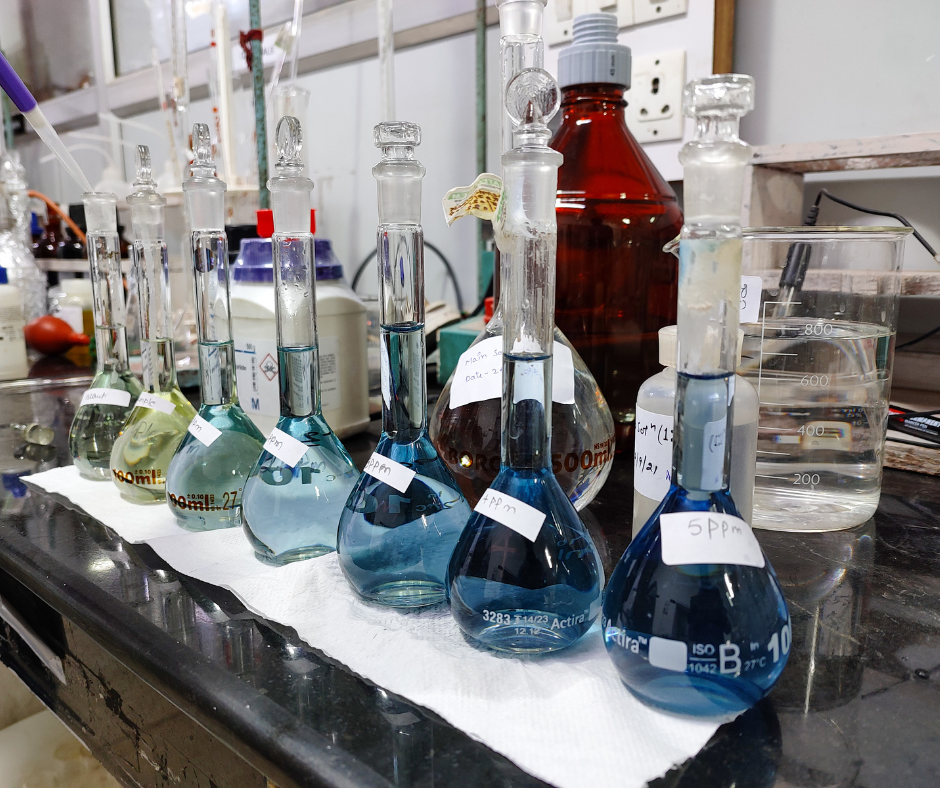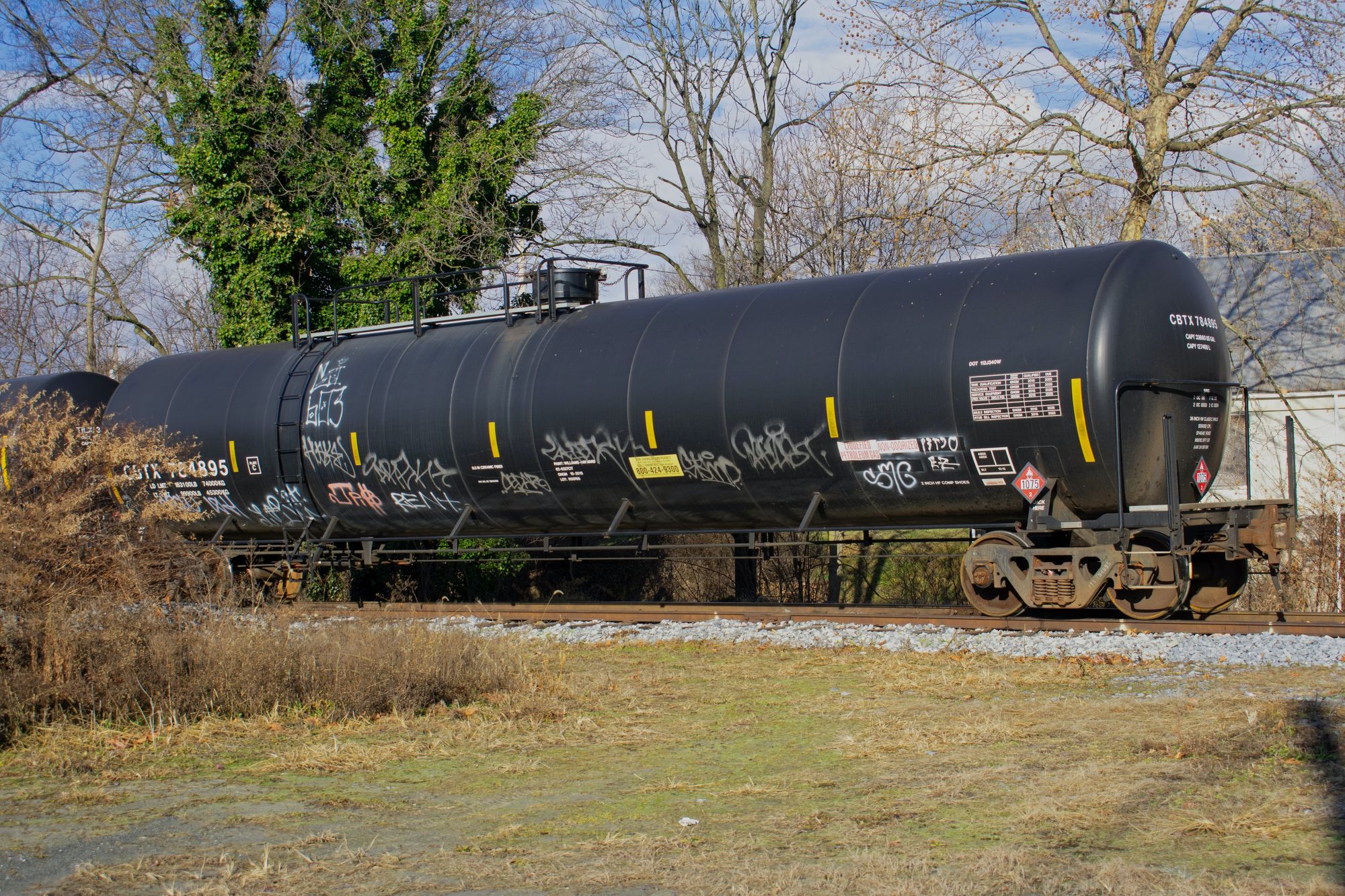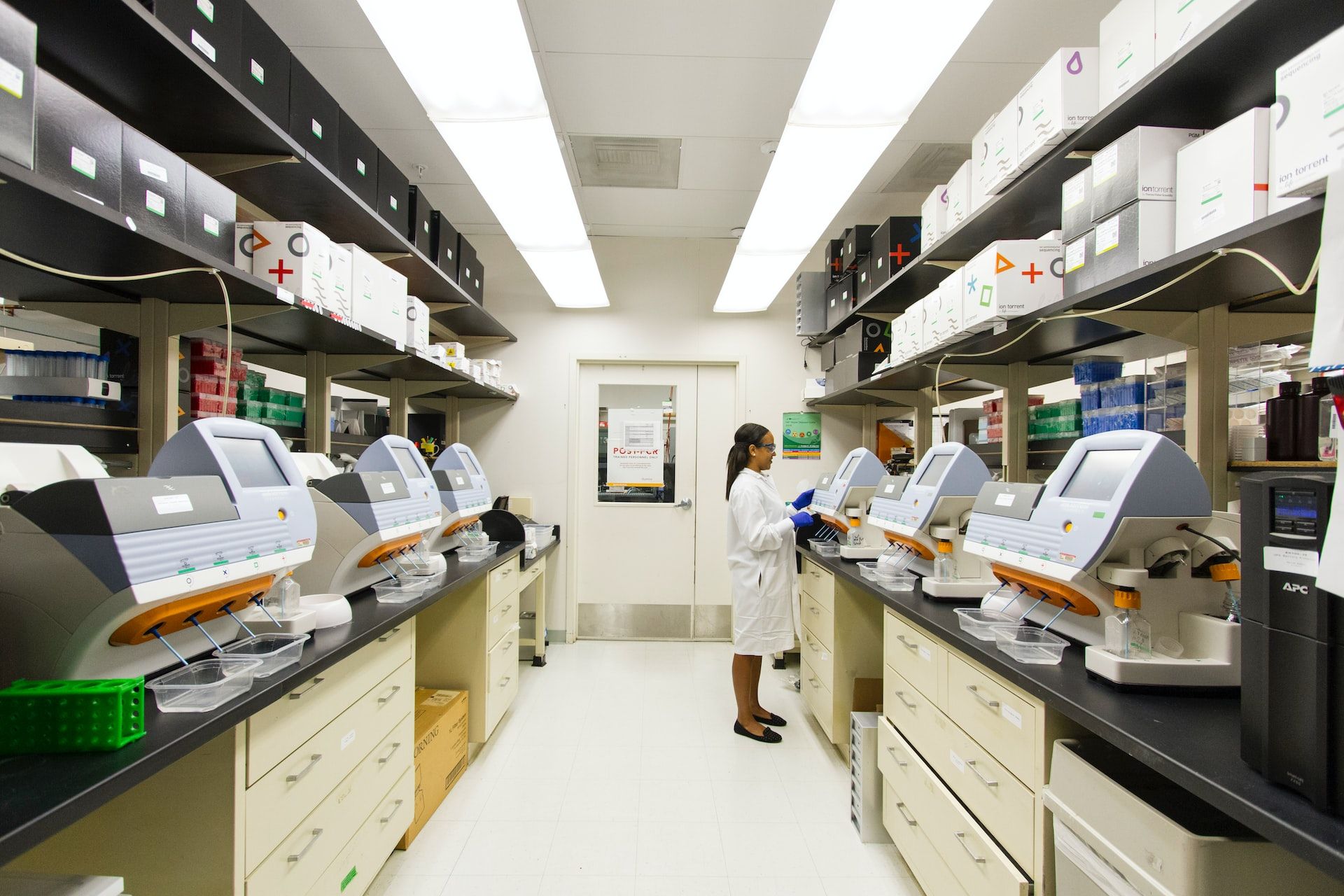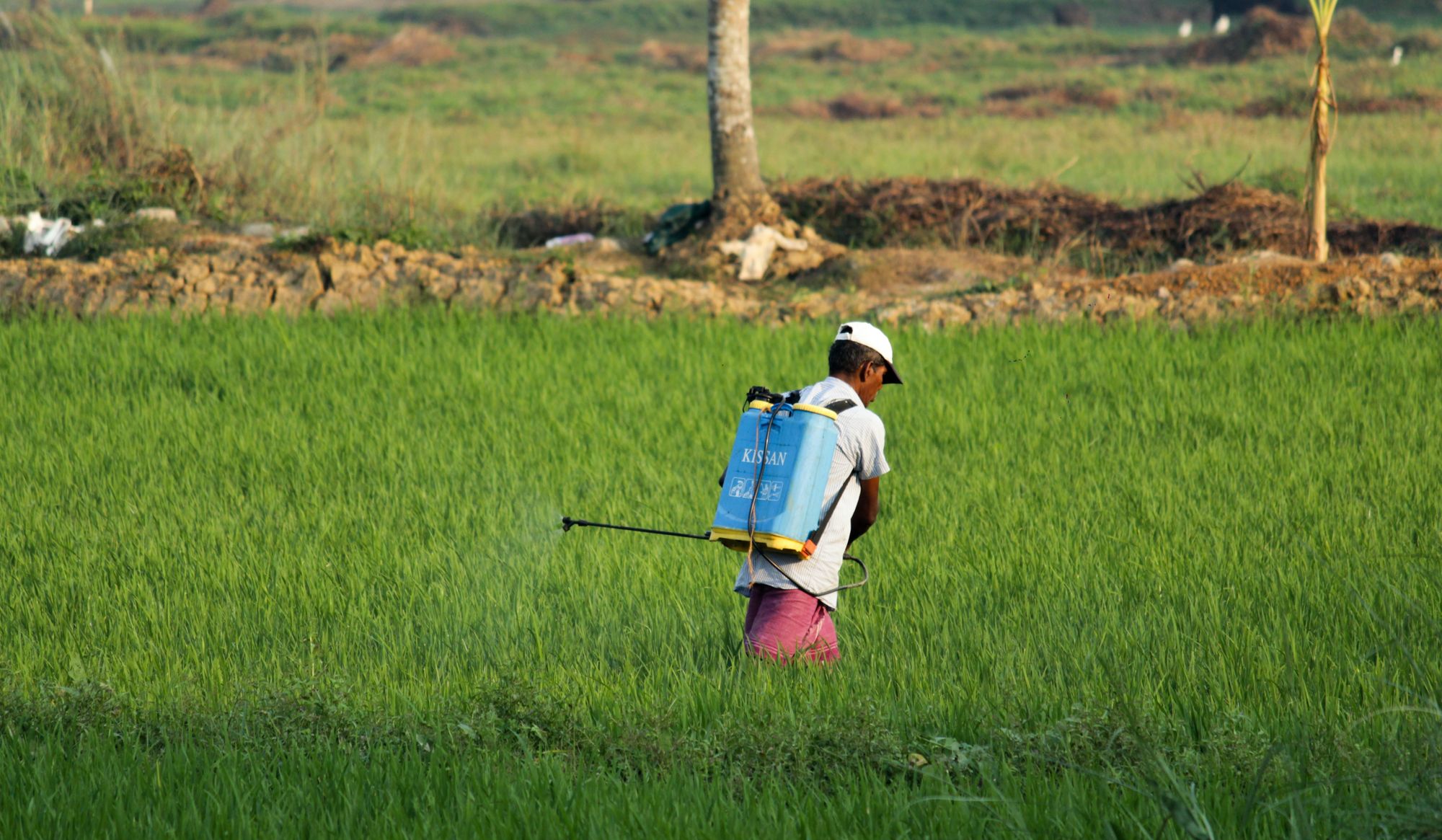As per MarketsandMarkets, the global pest control market is projected to grow from $19.4 billion in 2020 to $26.3 billion by 2026, at a CAGR of 5.3% during the forecast period. In fact, as per Mordor Intelligence, the United States pest control market was valued at $9.4 billion in 2020 and is projected to reach $12.2 billion by 2026, at a CAGR of 4.4% during the forecast period.
Additionally, as per ResearchandMarkets, the demand for organic pest control products is increasing, with the global organic pest control market expected to reach $5.6 billion by 2025, at a CAGR of 15.1% during the forecast period.

Lastly, as per Grand View Research, the use of technology in pest control manufacturing is increasing, with the global smart pest control market expected to reach $741.4 million by 2027, at a CAGR of 16.4% during the forecast period.
These statistics highlight the increasing market for pest control manufacturers.
Pest control manufacturing is the production of products used to control or eliminate pests, including insecticides, herbicides, and fungicides. These products are used to protect crops, homes, and other structures from damage caused by insects, rodents, and other pests.
However, to make the most of this increasing demand and remain competitive, as well as earn higher net revenue, and gross profits, it is important to maintain your quality. In fact, quality control in pest control manufacturing will also help in improving customer loyalty towards your brand.
This article will be your guide for all that you need to know about quality control in pest control manufacturing. It will cover the following topics:
- What is Pest Control Manufacturing?
- Quality Control in Pest Control Manufacturing
- What is the Importance of Quality Control in Pest Control Manufacturing?
- How to Implement Quality Control in Pest Control Manufacturing?
- How to Ensure Quality Control in Pest Control Manufacturing?
- How to Improve Quality Control in Pest Control Manufacturing?
- Which Quality Control Tools can be used for Quality Control in Pest Control Manufacturing?
- How can Technology Help in Implementing Quality Control in Pest Control Manufacturing?
- How can Deskera Help with Quality Control in Pest Control Manufacturing?
- Key Takeaways
- Related Articles
What is Pest Control Manufacturing?
Pest control manufacturing refers to the production of products that are designed to control or eliminate pests such as insects, rodents, and other unwanted organisms. These products can include insecticides, rodenticides, and other chemicals, as well as devices such as traps and baits.
The pest control manufacturing industry is typically focused on developing and producing effective and safe products that can be used by consumers, pest control professionals, and other stakeholders. This industry is regulated by government agencies to ensure that the products produced are safe for humans, animals, and the environment.
The manufacturing process for pest control products may involve the use of various chemicals and formulations, as well as specialized equipment and facilities. Quality control and testing are also important aspects of the manufacturing process to ensure that the products are effective and safe.
Overall, pest control manufacturing plays an important role in managing pests and protecting public health and safety.
Quality Control in Pest Control Manufacturing
Quality control is an essential part of the pest control manufacturing process to ensure that the products produced are effective and safe for use. In fact, by implementing these quality control measures, pest control manufacturers can ensure that their products are effective and safe for use and meet the necessary regulatory requirements.
Here are some common aspects of quality control in pest control manufacturing:
Raw Material Selection
The selection of raw materials, such as active ingredients and other components, is critical to the quality and effectiveness of pest control products. Quality control checks are performed on incoming raw materials to ensure that they meet specific quality standards.
Formulation and Mixing
Quality control checks are performed during the formulation and mixing of the pest control products to ensure that the right ingredients are being used in the right amounts.
Manufacturing Process
Quality control checks are conducted during the manufacturing process to ensure that the products are being produced according to the required standards and specifications.
Packaging and Labeling
Quality control checks are performed during the packaging and labeling process to ensure that the products are properly packaged and labeled with accurate and complete information.
Testing and Validation
Pest control products are subject to various testing and validation processes to ensure that they are effective and safe for use. This includes efficacy testing, toxicology testing, and environmental testing.
What is the Importance of Quality Control in Pest Control Manufacturing?
Quality control is an essential aspect of pest control manufacturing because it helps to ensure that the products manufactured are effective, safe, and consistent in their performance.
Here are some specific reasons why quality control is important in pest control manufacturing:
Ensuring Product Efficacy
Pest control products must be designed to effectively eliminate or control pests. Quality control processes help to ensure that the products being manufactured meet the required efficacy standards and that they are effective in their intended use.
Ensuring Product Safety
Pest control products can be harmful to humans and the environment if they are not properly formulated and manufactured. Quality control measures help to ensure that the products are safe to use, handle, and dispose of.
Meeting Regulatory Requirements
Pest control products are regulated by government agencies to ensure their safety and effectiveness. Quality control processes help to ensure that the products manufactured meet the regulatory requirements and that they are approved for use.
Maintaining Consistency
Quality control processes help to maintain consistency in the product's performance, ensuring that every product manufactured has the same quality, efficacy, and safety standards.
How to Implement Quality Control in Pest Control Manufacturing?
Implementing quality control in pest control manufacturing involves several key steps, including:
Establish Quality Objectives
Determine the quality objectives for the pest control products being manufactured, such as ensuring the products are safe and effective, comply with regulatory requirements, and meet customer expectations.
Develop Quality Standards
Establish quality standards for each step of the manufacturing process, including raw material selection, formulation and mixing, manufacturing process, packaging, labeling, and testing.
Develop Quality Control Procedures
Develop procedures for each step of the manufacturing process that define the methods, tools, and techniques required to meet the quality standards and achieve the quality objectives.
Implement Quality Controls
Implement quality controls at each step of the manufacturing process to ensure that the products are being produced in accordance with the established procedures and quality standards.
Conduct Regular Quality Checks
Conduct regular quality checks at each step of the manufacturing process to ensure that the products meet the established quality standards and objectives.
Record-Keeping
Maintain detailed records of the manufacturing process, including quality checks and testing results, to ensure traceability and facilitate continuous improvement.
Implement Corrective Actions
Establish procedures for identifying and correcting any deviations from the quality standards, and implement corrective actions as necessary to prevent a recurrence.
Provide Training and Education
Provide regular training and education to employees on the quality control plan and procedures to ensure that they are aware of the standards and processes required for producing high-quality pest control products.
How to Ensure Quality Control in Pest Control Manufacturing?
There are several different ways to ensure quality control in pest control manufacturing. By using these different methods to ensure quality control in pest control manufacturing, companies can produce high-quality products that are effective and safe for use while also complying with regulatory requirements.
Some of these ways are:
Standard Operating Procedures (SOPs)
Establishing SOPs for each step of the manufacturing process can help ensure consistency and quality in the production of pest control products.
Quality Control Checks
Conducting quality control checks at various stages of the manufacturing process can help identify any issues or deviations from the expected quality standards.
Training and Education
Providing regular training and education to employees on quality control best practices can help ensure that they are aware of the standards and processes required for producing high-quality pest control products.
Testing and Validation
Conducting regular testing and validation of the products to ensure they are effective and safe for use can help identify any issues and ensure that the products meet regulatory requirements.
Record-Keeping and Documentation
Maintaining detailed records and documentation of the manufacturing process, including the results of quality control checks and testing, can help identify any issues and provide evidence of compliance with regulatory requirements.
Continuous Improvement
Implementing a culture of continuous improvement can help identify opportunities for improvement in the manufacturing process, leading to better quality products and more efficient operations, with lesser need for safety stock.
How to Improve Quality Control in Pest Control Manufacturing?
To improve quality control in pest control manufacturing, there are several key steps that can be taken, including:
Review and Revise the Quality Control Plan
Regularly review and revise the quality control plan to ensure that it remains current and effective in meeting the quality objectives for the pest control products being manufactured.
Reviewing and revising the quality control plan for pest control manufacturing involves several key steps, including:
- Review the current quality control plan: Begin by reviewing the current quality control plan to identify any areas where it may be outdated, ineffective, or in need of revision.
- Evaluate feedback: Gather feedback from employees, customers, and stakeholders to identify areas where the quality control plan may need to be improved.
- Evaluate data: Analyze data collected during the manufacturing process, including quality control results and production data, to identify any areas where the manufacturing process may not be meeting the established quality objectives.
- Identify areas for improvement: Based on the feedback and data analysis, identify specific areas where the quality control plan can be improved, such as modifying procedures, adjusting specifications, or implementing new technologies.
- Revise the plan: Make revisions to the quality control plan, including updating procedures, specifications, and technologies as necessary to address any identified areas for improvement.
- Communicate changes: Communicate any changes to the quality control plan to employees and stakeholders, ensuring that they are aware of the updates and understand the implications for the manufacturing process.
- Implement changes: Implement the revised quality control plan, ensuring that all employees are trained on any new procedures or technologies and that the plan is effectively integrated into the manufacturing process.
- Monitor performance: Regularly monitor the performance of the revised quality control plan, conducting regular quality checks and analyzing data to ensure that the manufacturing process is meeting the established quality objectives.
By regularly reviewing and revising the quality control plan for pest control manufacturing, manufacturers can ensure that the plan remains current and effective in meeting quality objectives and that the manufacturing process is continuously improving.
Analyze Data
Use data analytics tools to analyze production data and quality control results, identifying patterns and trends that can help identify opportunities for improvement and optimize the manufacturing process. Thus, analyzing data is an important step in quality control for pest control manufacturing.
Here are some steps to follow when analyzing data for quality control:
- Collect data: Collect data from various sources in the manufacturing process, including raw materials, production processes, and quality control tests.
- Organize the data: Organize the data in a way that is easy to read and understand, such as creating spreadsheets or charts.
- Verify the data: Verify the accuracy of the data by checking for errors, such as missing data or outliers, and correcting any issues.
- Identify patterns and trends: Look for patterns and trends in the data, such as recurring defects or variations in quality control test results, which could indicate areas for improvement in the manufacturing process.
- Conduct statistical analysis: Use statistical analysis tools to further analyze the data and identify any significant correlations or trends.
- Compare results to quality objectives: Compare the data analysis results to the established quality objectives for the pest control products being manufactured, and identify any areas where the manufacturing process may not be meeting these objectives.
- Identify root causes: Conduct root cause analysis to identify the underlying causes of any quality control issues and develop corrective actions to address them.
- Make adjustments: Use the insights gained from the data analysis to make adjustments to the manufacturing process, such as modifying procedures or adjusting specifications, to improve quality control and ensure that the manufacturing process meets established quality objectives.
- Monitor progress: Monitor the impact of any adjustments made to the manufacturing process on quality control results, and continue to analyze data to identify any new areas for improvement.
By following these steps for analyzing data for quality control, pest control manufacturers can identify opportunities for improvement in the manufacturing process, ensure that quality objectives are being met, and continuously improve the quality of their products. This will even lead to positive brand awareness.
Conduct Root Cause Analysis
Conduct root cause analysis to identify the underlying causes of quality control issues and implement corrective actions to prevent a recurrence. Thus, conducting root cause analysis is a key step in quality control for pest control manufacturing.
Here are some steps to follow when conducting root cause analysis:
- Define the problem: Clearly define the quality control issue being addressed, including the specific symptoms, time frame, and impact on the manufacturing process.
- Collect data: Collect data on the quality control issue, including production data, quality control test results, and employee feedback.
- Analyze the data: Analyze the data to identify any patterns or trends that may be contributing to the quality control issue.
- Identify potential causes: Brainstorm potential causes of the quality control issue, considering factors such as equipment, procedures, materials, and human error.
- Narrow down potential causes: Narrow down the list of potential causes based on the data analysis and any additional information gathered, such as employee feedback or observations of the manufacturing process.
- Test potential causes: Test each potential cause to determine if it is the root cause of the quality control issue, using methods such as experimentation, observation, or data analysis.
- Identify the root cause: Once the root cause has been identified, document it clearly, including a description of how it was discovered, the data and analysis supporting it, and any other relevant information.
- Develop corrective actions: Develop corrective actions to address the root cause of the quality control issue, including specific steps, timelines, and responsible parties.
- Implement corrective actions: Implement the corrective actions, ensuring that all employees are trained on any new procedures or processes and that the changes are effectively integrated into the manufacturing process.
- Monitor progress: Monitor the impact of the corrective actions on the manufacturing process and quality control results, conducting follow-up testing and analysis as necessary.
By following these steps for conducting root cause analysis in quality control, pest control manufacturers can identify and address the underlying causes of quality control issues, leading to improved quality and a more effective manufacturing process. In fact, this will lead to improved production planning and scheduling, as well as a more accurate master production schedule.
Employee Training
Provide regular training and education to employees on the quality control plan and procedures to ensure that they are aware of the standards and processes required for producing high-quality pest control products.
Here are some steps for employee training for quality control in pest control manufacturing:
- Identify the training needs: Identify the specific areas where your employees need training in quality control. This could include topics like pest identification, pesticide application, record-keeping, safety procedures, and more.
- Develop a training plan: Based on the identified training needs, develop a comprehensive training plan that includes the training objectives, the training methods, and the evaluation criteria.
- Choose the training methods: Consider the most effective methods for delivering the training, such as classroom sessions, hands-on demonstrations, online training, or a combination of methods.
- Schedule the training: Determine the timing of the training sessions and communicate this to your employees in advance. Make sure to schedule the training at a time when the employees are available and not busy with other tasks.
- Deliver the training: Conduct the training sessions according to the plan you developed. Make sure to use clear and concise language, provide visual aids, and allow time for questions and feedback.
- Monitor the training: Monitor the progress of the employees during the training and provide feedback as necessary. Identify any areas where additional training may be needed and address them accordingly.
- Evaluate the training: Evaluate the effectiveness of the training by soliciting feedback from the employees and assessing their performance on the job after the training. Use this feedback to refine the training plan and improve future training sessions.
By following these steps, you can help ensure that your employees are properly trained in quality control for pest control manufacturing, which can help improve the overall quality of your products and services. It will also lead to better management of workplace stress while ensuring that you are able to retain top talents in your company.
Continuously Monitor Quality
Conduct regular quality checks at each step of the manufacturing process to ensure that the products meet the established quality standards and objectives.
Here are some steps for continuously monitoring quality in quality control in pest control manufacturing:
- Develop a quality control plan: Create a detailed plan that outlines the quality control procedures and methods for pest control manufacturing. This should include procedures for pest identification, pesticide application, record-keeping, safety procedures, and more.
- Implement the plan: Implement the quality control plan and make sure that all employees are trained on the procedures and methods. Ensure that the plan is followed consistently.
- Establish quality control checkpoints: Identify key points in the pest control manufacturing process where quality can be monitored and checked. These checkpoints could include incoming raw materials, pest identification, pesticide application, packaging, and shipping.
- Conduct inspections: Regularly conduct inspections at each quality control checkpoint to ensure that the products meet the required quality standards. Inspections could include visual inspections, physical testing, and laboratory analysis.
- Analyze data: Analyze the data collected during the inspections to identify any trends or patterns. Use this information to make informed decisions about quality improvements and process changes.
- Address issues: When quality issues are identified, take prompt action to address them. This may include reworking the product, adjusting the manufacturing process, or investigating the root cause of the issue.
- Continuously improve: Continuously review the quality control plan and make improvements as necessary. Use feedback from employees, customers, and suppliers to identify areas where quality can be improved.
By following these steps, you can establish a robust quality control program that continuously monitors quality in pest control manufacturing.
This can help you identify and address issues early on, which can reduce waste, improve efficiency, and ultimately result in higher quality products and services, which will encourage returning customers. It will also help you improve your cash flow, as well as ensure that there is no undue pressure on your working capital.
Technology Implementation
Implement technology, such as automated inspection systems and real-time monitoring tools, to improve the accuracy, consistency, and efficiency of the quality control process.
Here are some steps for technology implementation in quality control in pest control manufacturing:
- Identify the technology needs: Identify the specific areas where technology can be used to improve quality control in pest control manufacturing. This could include areas such as pest identification, pesticide application, record-keeping, safety procedures, and more.
- Research available technologies: Research the available technologies that can help address the identified needs. Consider factors such as cost, ease of use, compatibility with existing systems, and potential benefits.
- Choose the right technology: Choose the technology that best meets the needs of your pest control manufacturing operation. Make sure that the technology is appropriate for your business size and goals.
- Develop a technology implementation plan: Develop a comprehensive plan for implementing the technology. This should include the implementation schedule, training requirements, and any necessary adjustments to current processes.
- Provide training: Provide training to employees on how to use the technology effectively. This may involve on-site training, webinars, or other forms of instruction.
- Test and pilot: Test the technology in a pilot project or with a limited group of users to ensure that it works as intended and to identify any issues that need to be addressed before wider implementation.
- Rollout and integrate: Roll out the technology to all relevant employees and integrate it into the existing quality control procedures. Monitor the implementation and make any necessary adjustments to ensure successful adoption.
- Evaluate and adjust: Continuously evaluate the effectiveness of the technology and make adjustments as necessary. Solicit feedback from employees and other stakeholders to identify areas where improvements can be made.
By following these steps, you can successfully implement technology in quality control in pest control manufacturing. This can help improve the efficiency and effectiveness of your quality control processes, reduce errors and waste, and ultimately improve the quality of your products and services.
Ultimately, this would lead to lesser business expenses, with better performing operational metrics, financial KPIs, and business metrics.
Customer Feedback
Customer feedback is an essential part of quality control in pest control manufacturing, as it can help identify areas where improvements can be made and ensure that customer needs are being met. Customer feedback will also help in improving the manufacturing process. Here are some steps for incorporating customer feedback into your quality control process:
- Collect customer feedback: Collect feedback from customers through various channels such as surveys, feedback forms, social media, or direct communication.
- Categorize the feedback: Categorize the feedback into different categories based on the type of issue identified. This can help prioritize the areas that need improvement and facilitate analysis.
- Analyze the feedback: Analyze the feedback to identify trends, patterns, and common issues. Look for recurring themes or problems that are impacting multiple customers.
- Address the feedback: Take action to address the feedback and improve the quality of your products and services. This may include process improvements, changes to product formulations, or better training for employees.
- Monitor and track progress: Monitor the progress of the changes implemented and track how they are impacting customer feedback. Use this information to make further adjustments as necessary.
- Communicate with customers: Communicate with customers to let them know that their feedback has been heard and addressed. This can help build trust and demonstrate your commitment to quality.
This would also ensure improved customer retention, as well as higher sales referrals, which in turn will lead to higher net profits.
Which Quality Control Tools can be used for Quality Control in Pest Control Manufacturing?
By using quality control tools, pest control manufacturing companies can identify quality issues early on, improve processes, and ensure that their products meet the required quality standards.
There are several quality control tools that can be used for quality control in pest control manufacturing. Here are some examples:
Checklists
Checklists can be used to ensure that all required steps are followed in the pest control manufacturing process. This can help prevent errors and ensure consistent quality.
Statistical Process Control (SPC)
SPC is a method for monitoring and controlling a process by measuring and analyzing process data. It can help identify trends, patterns, and variations in the process, allowing for early detection and correction of quality issues.
Root Cause Analysis (RCA)
RCA is a problem-solving method used to identify the underlying causes of quality issues. By identifying the root causes of a problem, it is possible to develop effective solutions and prevent the problem from recurring.
Pareto Analysis
Pareto analysis is a technique for identifying the most significant problems or issues in a process. By focusing on the most significant issues, it is possible to prioritize improvements and allocate resources more effectively.
Failure Mode and Effects Analysis (FMEA)
FMEA is a method for identifying and addressing potential failures in a process or product. It involves identifying potential failure modes, determining the effects of those failures, and developing strategies to prevent or mitigate them.
Six Sigma
Six Sigma is a methodology for quality control that is focused on reducing defects and improving process performance by using data-driven decision-making. The goal of Six Sigma is to achieve a level of quality that is six standard deviations away from the mean of a normal distribution, which equates to a defect rate of 3.4 per million opportunities. By using Six Sigma for quality control, companies can improve the consistency and quality of their products and services, reduce waste and costs, and improve customer satisfaction.
Control Charts
Control charts are graphical tools that display process data over time. They can help identify patterns, trends, and deviations from the expected process performance, allowing for early detection and correction of quality issues.
How can Technology Help in Implementing Quality Control in Pest Control Manufacturing?
By using technology pest control manufacturers can improve the accuracy, consistency, and efficiency of their quality control processes, ultimately resulting in higher-quality products that meet regulatory requirements and customer expectations.
Thus, technology can play a significant role in quality control in pest control manufacturing in several ways, including:
Automated Inspection
Automated inspection technologies such as machine vision systems can be used to detect defects and anomalies in the manufacturing process, reducing the potential for human error and improving the accuracy and consistency of inspections.
Real-time Monitoring
Sensors and monitoring systems can be used to monitor critical parameters in real-time, such as temperature, humidity, and pressure, to ensure that the manufacturing process is operating within the required specifications.
Data Analysis
Data analytics tools can be used to analyze data collected during the manufacturing process, identifying patterns and trends that can help identify opportunities for improvement and optimize the manufacturing process.
Remote Access
Remote access technologies can enable quality control personnel to access production data and quality control results from remote locations, facilitating collaboration and improving the efficiency of the quality control process.
Electronic Documentation
Electronic documentation systems can be used to store and manage quality control records, providing easy access to historical data and improving the traceability of the manufacturing process.
Process Control Systems
Process control systems can be used to automatically adjust the manufacturing process parameters based on real-time data, improving consistency and reducing the potential for errors.
How can Deskera Help with Quality Control in Pest Control Manufacturing?
Deskera is a cloud-based business management software that can help with quality control in pest control manufacturing in several ways. Here are some examples:
- Quality Control Management: Deskera offers a Quality Control Management module that enables pest control manufacturers to manage the entire quality control process, including inspection planning, quality control checks, corrective actions, and compliance tracking. This can help ensure that products meet the required quality standards.
- Inventory Management: Deskera's Inventory Management module can help pest control manufacturers track inventory levels, monitor stock levels, and automate replenishment. This can help ensure that the right materials are available for production and reduce the risk of stockouts or delays.
- Manufacturing Resource Planning (MRP): Deskera's MRP module enables manufacturers to plan and schedule production, allocate resources, and manage production orders. This can help optimize production processes and ensure that products are manufactured efficiently and cost-effectively.
- Customer Relationship Management (CRM): Deskera's CRM module enables pest control manufacturers to manage customer interactions, track customer feedback, and analyze customer data. This can help manufacturers identify customer needs and preferences, improve customer satisfaction, and enhance the quality of their products and services.
- Business Intelligence (BI) and Analytics: Deskera's BI and Analytics module provides pest control manufacturers with insights into their business performance, including sales trends, inventory levels, production efficiency, and quality control metrics. This can help manufacturers make data-driven decisions and improve their overall business performance.
Key Takeaways
Pest control manufacturing is the production of products used to control or eliminate pests, including insecticides, herbicides, and fungicides. These products are used to protect crops, homes, and other structures from damage caused by insects, rodents, and other pests.
Quality control in pest control manufacturing is the process of ensuring that all pest control products are manufactured in accordance with regulatory standards and that they meet the requirements of the customer.
It involves inspecting, testing, and validating pest control products to ensure that they are of high quality and safe to use. Quality control includes activities such as testing for active ingredients, verifying shelf life and storage requirements, reviewing product labels and instructions, examining packaging for defects, and conducting safety tests.
The importance of quality control in pest control manufacturing is:
- Ensuring Product Efficacy
- Ensuring Product Safety
- Meeting Regulatory Requirements
- Maintaining Consistency
The steps for implementing quality control in pest control manufacturing are:
- Establish Quality Objectives
- Develop Quality Standards
- Develop Quality Control Procedures
- Implement Quality Controls
- Conduct Regular Quality Checks
- Record-Keeping
- Implement Corrective Actions
- Provide Training and Education
Some of the ways in which you can ensure quality control in pest control manufacturing are:
- Standard Operating Procedures (SOPs)
- Quality Control Checks
- Training and Education
- Testing and Validation
- Record-Keeping and Documentation
- Continuous Improvement
Steps for improving quality control in pest control manufacturing are:
- Review and Revise the Quality Control Plan
- Analyze Data
- Conduct Root Cause Analysis
- Employee Training
- Continuously Monitor Quality
- Technology Implementation
- Customer Feedback
The quality control tools that you can use for quality control in pest control manufacturing are:
- Checklists
- Statistical Process Control (SPC)
- Root Cause Analysis (RCA)
- Pareto Analysis
- Failure Mode and Effects Analysis (FMEA)
- Six Sigma
- Control Charts
The several ways in which technology implementation can help with quality control in pest control manufacturing are:
- Automated Inspection
- Real-time Monitoring
- Data Analysis
- Remote Access
- Electronic Documentation
- Process Control Systems
Deskera can help pest control manufacturers manage the entire quality control process, optimize production processes, manage inventory, and improve customer satisfaction by providing a comprehensive suite of business management tools.
Related Articles














